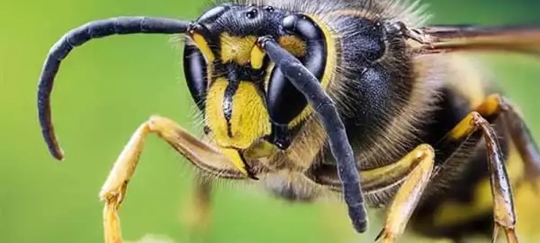When it comes to preventing insect stings, there are two types of pest control to consider. One is personal and is geared toward keeping you from attracting the unwanted attention of stinging pests. The other works to make your yard a safer place to be. Here's how they work.
Personal Protection for Stinging Insects
- Keep a lookout for stinging insects coming and going from gaps, cracks, or holes. Seeing them before you get too close to a nest can prevent a very painful encounter.
- If a bee, wasp, or hornet takes an interest in you, move briskly away without swinging your arms. This will reduce your chances of provoking it.
- Keep food in sealed containers until you're ready to cook them or eat them. Some stinging insects gather pieces of protein to bring back to feed their larvae.
- Don't leave sweet drinks unattended. Stinging insects can drink sweet liquids in the same way they draw nectar from a flower.
- Refrain from wearing cologne or perfume when you're outside. If you smell like a flower, don't be surprised when a stinging insect takes an interest in you.
- Refrain from wearing bright colors or flower patterns. If you look like a patch of flowers to a stinging insect, it will come to take a closer look.
- Don't have your picnic near outdoor trash receptacles. Yellow jackets and other wasps commonly hang out around trash receptacles because there are many food options for them in the trash. If you're having a picnic where wasps can turn their attention to your food, you may get stung.
Yard Protection for Stinging Insects
It is okay to have bees, wasps, and hornets visit your yard. They are important for pollination, and wasps help to control dangerous spiders. But they can cease to be a benefit when they create a nest on your property. Social insects have a nest-protection instinct. For this reason, routine checks for aerial, ground, and void nests are essential. Aerial nests can be found in trees, and bushes, under the overhangs of your home, and in other locations above ground. Ground nests can be found in holes and under objects that create a cavity. Void nests are created inside the walls of your home, a piece of stored furniture, and similar locations. These are often impossible to see. Look for stinging insects entering and exiting entry points.
If you find a nest on your property or you'd like ongoing monitoring of nests, we're here to help. We know what stinging insects are flying around in your yard and how to remove them. Get started by requesting a free estimate.

